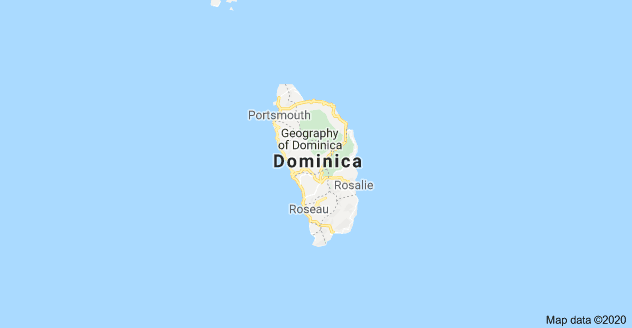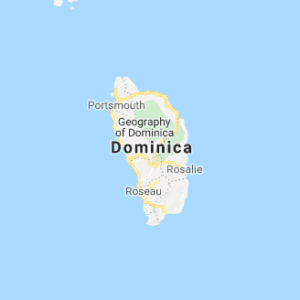Description
Dominica General Tour:
2-2.5 hours
Our tour begins in the historical district of Roseau with a drive through the capital objectively seeking nature in this island that has the highest rate of “centenarianism”. The air will be so clean and wonderful visible in the next important area TRAM LAUDAT. This visit to Dominica is a real chance to witness an island that was shaped by a powerful series of cataclysmic events creating a geological wonder with Individually Connected Mountain Range Chain that creates massive amounts of precipitation filling rivers that feed the trees in the many forests. One of these are TRAFALGAR FALLS Witness the process of precipitation as we drive through the various grades of elevations on our way to SCOTT’S HEAD. Before we return to your cruise ship or hotel we would have witnessed less than 365 rivers-alluvial channels- carrying mineral filled water that nourishes the vegetation that is consumed locally. We will RECITE other cultural heritage practices that have been passed down over many millennia from Africa to the pre Colombian period. Main points of interest will be covered: Trafalgar Falls, Scotts Head with a return to your cruise ship/hotel.
Morning Tour
9:00 A.M. (on this tour schedule you can shop (optional) near the cruise ship from 11:30-1:30 +/- have lunch on the ship or locale by 2:00 – 2:30 P.M.)
Afternoon Tour
12:00 P.M. (on this tour schedule you can swim (optional) from 2:30 +/- have a late swim until 3:30 and be back to your ship or locale by 4:00 P.M.
Adults- $85.00
Children (13 years and under) $65.00
(4 years and under Free- 2 maximum per couple)
Dominica – Locater
Dominica: Named after the day of the week; Sunday.
Located: 15 degrees 18’ N, 61 degrees 23’ W
Capital: Roseau
Population: 71,727
Size: 290 sq mi
Highest Point: Approximately 4,550
Language: Official government language; English/ Cultural language; Patois
Religions:
Government: Parliamentary Democracy
Economy: Agriculture and Tourism
Local Holidays
Notes: Dominica was sighted and minimally explored by Columbus on a Sunday hence
the origin of its name.
The islands lush, thick and virtually impenetrable forests prevented the
colonization of vast areas of the interior for a few centuries while surrounding
islands were being colonized many times over.
Dominica Historical Synopsis
Dominica was a very hard island to conquer and break into for Europeans who were colonizing all over the Caribbean particularly the bigger and most fertile islands. For purposes of agriculture, the smaller islands and cays are less desirable.
Dominica, one of those rare islands that are an absolute wonder, a paradise that is so beautiful and natural you naturally attribute its beauty to there being a God. That is probably why the Indians so fiercely protected and fought for it. They were aware of the European encroachment and brutality; a quest for slaves, their land, and women.
The very thick foliage was used to their advantage to shelter and hide them from the Europeans and provide unlimited food for their survival while protecting their island. Many Indians came from other islands to escape the Europeans and fortified the island even more. This influx of Indians replenished the islands population of Indians until they were left alone and a reservation was made for them by Great Britain. The island would have still been Carib today if it were not for the Europeans. The island is still lush today and is able to sustain human life in this condition forever.
Dominica has lots of undeveloped land and a large land to population ratio. Very mountainous it is not conducive to archaeology. What we can’t conclude with archaeology we can with common sense that many different tribes inhabited Dominica and must have lived here with large numbers because of the abundance of food, rivers, with fresh water and trees to make boats. Dominica doesn’t have many beaches, probably because it was still an active volcano very recently. The sulfur spewed from volcanoes with ash made fertile ground along with the water falls from the high hills at over 4,000 ft. catching the rain from the clouds. The island is a Garden of Eden. Definitely!
Some of the tribes made pottery and different survival tools and more than likely traded food from Dominica to tribes in different islands.
Dominica is not the size of Puerto Rico or Trinidad, but is larger than Tobago, Antigua, and Barbuda together; St. Kitts and Nevis combined; and the entire Virgin Islands.
Dominica was named by Christopher Columbus but wasn’t successfully settled until the French fought for it and was able to really start a continuous production in the mid to late18th century. Before it was finally ceded to Great Britain in 1783 and fought over again in 1805, America helped the French reclaim after the American Revolution. After the French lost control, it remained English until it became independent in 1978. Though the island became a British colony the vast majority of the residents speak a patois that was shunned in the 1930’s – 90’s, until recently embraced as a strength and taught in schools. English is also taught in schools and used in government.
Today Dominica is protecting the island like the Indians did to save the island from the commercialization and over development seen in many Caribbean Islands. Eco tourism is the option of choice for the government.
Dominica Timeline
10: B.C. inhabited and also visited by Indians. The island was used as a source for food because of its lush vegetation, rainforests and many rivers.
1493: Dominica was named after the day of the week he sighted it by Columbus. Dominica was such a lush impenetrable forest saturated with Indians bent on
protecting it they were not able to colonize it or to successfully steel and capture Indians from there. It would take 200 plus years for Europeans to settle with semi permanent structures and establish a real economy coming out of the island.
1494: Caribs solely inhabit Dominica.
1627: England tried to settle Dominica but was not able to because of the dense forests and the fierce fighting of Indians.
1630: A mixed heritage child (see 1664) was conceived through the union of General Warner; Governor of St. Kitts, and a Carib Indian woman from Dominica.
1635: French colonizers were finally able to settle for a few years maybe two decades but were eventually driven off by the tenacious fighting and killing of French men by the Caribs.
1647: Carib Indian Population is approximately 5,000; it could be much more.
1660: Caribs reclaim the island.
1664: The son of General Warner of Great Britain and the Carib Indian, was born with military strategy in his blood and led an attack against the French with 500 Indians who sailed with him from Dominica to St. Lucia, he was 33 years old and this happened after his father’s death.
1725: French Settled.
1730: The Indian population dwindled to a few hundred. It is estimated by census that about 400 Indians were still living there, but that is really questionable given that there was still so much forests in Dominica for many more to hide and live.
1763: English fought the French for Dominica and was successful at disrupting and dispelling the French. With settlements nearby they would be back.
1778: The French regained control while the British was distracted and overwhelmed by the Americans during the American Revolution. Incidentally the French was an American ally at the time and they helped France reclaim the island.
1780: Hurricane hit Dominica.
1783: Treaty of Versailles was signed by the French signing over rights of Dominica to Great Britain.
1805: A battle between the French and British took place at Fort Shirley during the French rise to power under Napoleon. The French were driven off ceding the island to the British, but the French’s long dominance of Dominica left a strong influence for the people there now speak a broken French language called patois.
1812: Wars between the Brits and African Maroons; some of who escaped into the hills and forests of Dominica. Some were caught and forced by any means necessary to assist the planters in capturing other Maroons, by leading them to their military bases.
1834: Great Britain freed the African slaves on July 31st.
1838: Dominica has a Black (African) legislature the first of its kind in the Caribbean.
1893: Land Tax Riots occurred.
1898: Dominica became a British Crown Colony the same year that Puerto Rico was ceded to America after the Spanish American War.
1896: Great Britain regained control of the government.
1903: Great Britain moved the Caribs to a 7,300 acre reservation. The island has a huge ethnic mixture of African, European and Indian people. These large mixtures illustrates the large population of Indians that were living there and were resilient to the end of European rule and their onslaught of rapes tortures and killings.
1958: Dominica became a member of the West Indies Federation until 1962.
1978: Dominica’s independence was sought and achieved on November 3.
2003: Census counts 71, 727 people living in Dominica.
2005: Pirates of The Caribbean was filmed.
Additional information
| Type of Ticket | Child, Adult [+10.00] |
|---|





